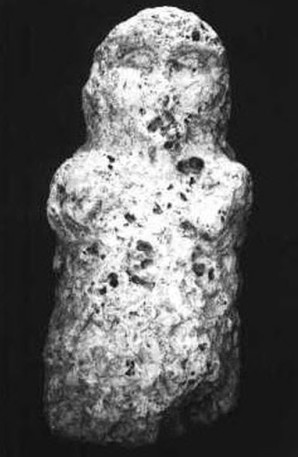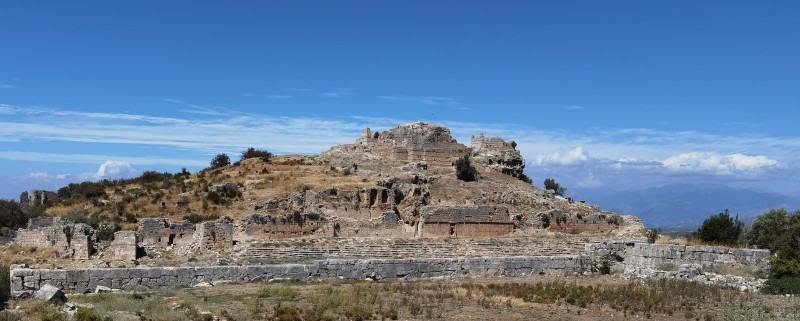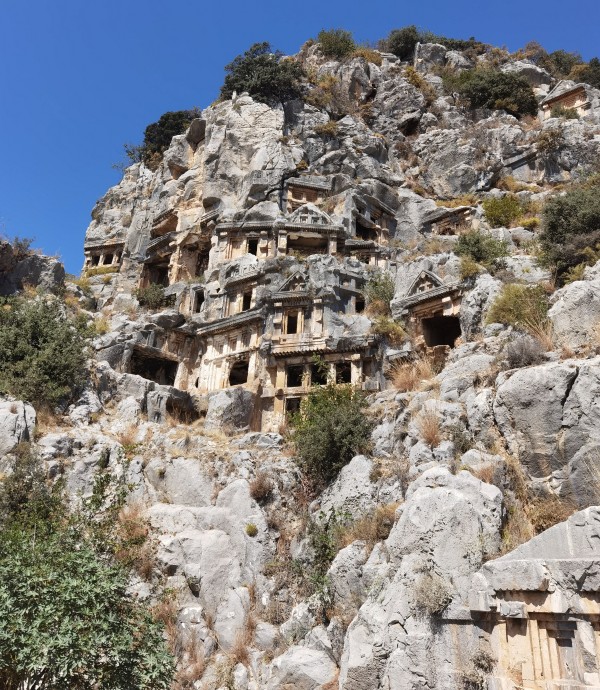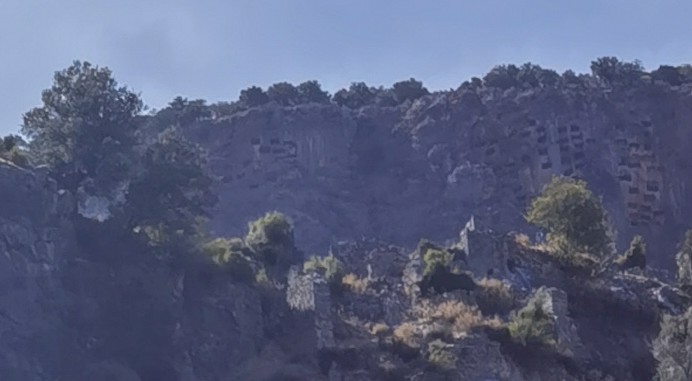|
The subtitle »land ruled by women« was not chosen randomly but comes from a quotation by the Greek philosopher Heraclides Ponticus who lived in the fourth century BC. He described the Lycians in this way: »The Lycians spend their lives as brigands. They don't employ laws, but customs, and from ancient times they have been ruled by women.« Heraclides Ponticus was born in Herakleia Pontike (now Karadeniz Eregli) in the Northwest of Turkey - a region not far away from Lycia, thus he must have known Lycia. Therefore, this information seems to be rather reliable. Lycia is in the Southwest of Turkey at the Mediterranean Sea. The landscape is very mountainous but there are also many fertile valleys and coastal areas. The most important river of this region is Xanthos - in Greek, today in Turkish its name is Esen Çayi. In this broad valley many important Lycian settlements have been discovered. |

Xanthos River (Esen Çayi) |
|
There are numerous ancient reports and quotations which refer to the significant role of women in ancient Lycian civilization:
The Greek historian Herodotus mentions that the Lycian children are named after their mother. The Greek philosopher and historian Plutarchus tells us the same.
Concerning the law of inheritance the Lycian women were privileged. Unique and amazing was the line of succession. It was the daughters who received the inheritance.
Moreover, it was also very remarkable that the legal position of the mother was authoritative for the legal position of the children.
In myth the predominating role of the Lycian women is also evident, for example in this story by Plutarchus:
»Bellerophon killed a wild boar which was making havoc of the stock and crops in the land of the Xanthians, but obtained no fitting reward; whereupon he addressed to Poseidon imprecations against the Xanthians, and the whole plain suddenly became glittering with a salt deposit and was completely ruined, since the soil had become saline. This lasted until Bellerophon, out of respect for the women who besought him, prayed to Poseidon to give up his anger. For this reason, it was the custom for the Xanthians to bear names derived not from their fathers but from their mothers. «
In the Iliad, the first European work of literature there is a hint which connects Lycia to the Amazons. For his third task the Greek hero Bellerophon had to defeat the Amazons in Lycia.
Quotation in the original: »And by way of a third task, he killed the Amazons who go to war like men. «
It is significant for the Lycians that their most important divinity was a female goddess. Lycia had a major religious center which was very important for the whole land. This site Letoon near the eminent city of Xanthos was mainly inhabited by priests. The main temple was dedicated to the Greek goddess Leto. She was the Hellenized version of their ancient mother goddess named Eni Mahanani. Leto - a gentle fertility goddess and mother of Apollo and Artemis, seems to have been regarded as an adequate representative of their indigenous mother goddess.
It is also remarkable that »Lada« is the Lycian word for Woman. Lada and Leto sound rather similar.
|

Eni Mahanani - ancient Lycian mother goddess |
|
The history of Lycia has a very long tradition. In the writings of the Hittites dating back to the second millennium BC there are references to a land called »Lukka« which rather certainly is identical with Lycia. In these sources there is mentioned Tlawa or Dalawa as an important city in Lukka. Actually, this ancient city is identical with the site Tlos (in Lycian: Tlawa), one of the most important Lycian cities. Due to archaeological research work it has been found out that there already existed a settlement in the Bronze Age.
|

Tlos - Tlawa |
|
Impressive funerary monuments are a unique characteristic of the Lycians. When you visit Lycia today you will be overwhelmed by the great rock-hewn tombs und huge sarcophagi. Those sarcophagi are often grouped in substantial numbers - like a cemetery. On the other hand, there are many rock-hewn burial chambers, in many cases with an impressing temple facade. Sometimes these rock-hewn chambers are in dizzying height like in Pinara. One wonders how it was possible to build these elaborate chambers using the tools of their time. Furthermore, you often see high pillar tombs. The veneration of the dead must have been of utmost importance for the Lycians. In the Iliad this particular attitude concerning death is reflected by the Lycian captain Glaukos. Referring to the finiteness of life he says following:
»
For, as the leaves, such is the race of man.
The wind shakes down the leaves, the budding grove Soon teems with others, and in spring they grow. So pass mankind. One generation meets Its destined period, and a new succeeds.« Following story fits in this context: During the conquest of Lycia by the Persians the Xanthians were heavily defeated. The surviving Lycians did not want to live in captivity and committed collective suicide. |

Xanthos: burial chambers and pillar tomb |

Myra |

Heroon of Trysa near Myra: depiction of fighting Amazons |

Teimiussa: sarcophagi |

Tlos: rock-hewn burial chambers |

Pinara: rock-hewn tombs on steep rock wall |

Simena: sarcophagus in the sea |
|
Our detailed report about our research results of our exploring trip: => Lycia 2024 (PDF file - 57.5 MB) |
| B o o k s | |
|
Gerhard Pöllauer: The Lost History of the Amazons Recent research findings on the legendary women nation ISBN: 978-1-4461-9305-1; Paperback, 148 pages, 87 black-and-white pictures, 3 illustrations Price: $17.48
This book focuses on the numerous traces of the Amazons.
It reports on latest findings and investigation in the legendary homeland of the Amazons at the
river Thermodon and on the Amazon island Lemnos. |

|
|
Gerhard Pöllauer, Geheimnisvolles Lemnos. Die von Frauen beherrschte Insel (Mysterious Lemnos. Island dominated by women) ISBN: 978-3-902096-77-7; Paperback, 128 pages, 97 black-and-white pictures, 3 color photos, 1 map Price: EUR 13.00
The rather unknown North Aegean island Lemnos amazes with its great prehistoric past.
About 5000 years ago there existed a highly-developed civilization which created imposing cities,
mighty rock buildings and impressive sanctuaries on this Greek island. The discovery of Poliochni was sensational.
Because of its largeness and refinement this Bronze Age settlement is regarded as the most ancient city of Europe.
Also the discoveries at Myrina in the west and Hephaistia in the north witness the island's
prehistoric importance. Presumably there was a further city in the Northeast - Chryse, which was sunken under the sea.
|

|
Updated: October 10, 2025

|

|

|

|

|

|

|

|
Picture Gallery and Books *** Our Projects *** About Us Copyright © 1997-2025 Amazon Research Center |

|